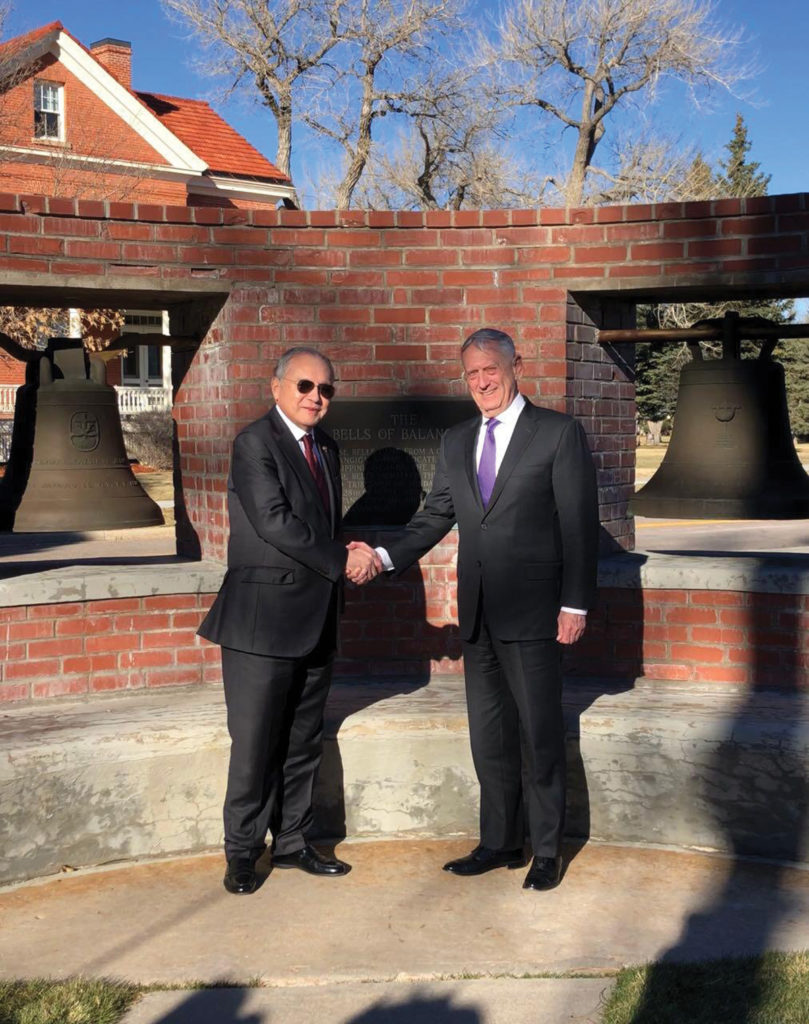
After the United States Defense Department initiated the return of the historic Balangiga bells to the Philippines this week, Philippine President Rodrigo Duterte could be open to an official visit to the U.S., despite his past criticism of the country.
Department of Foreign Affairs (DFA) Secretary Teodoro Locsin Jr. revealed with the return of the bells, the president is warming up to the idea of setting foot in the U.S.
“Now the point of that was, I reminded everyone, that I said, ‘By the way, when this was raised, I said, he won’t go there until the Balangiga bells are returned.’ Well, they’re coming back so he will have to go there, to the United States. I would think. If that’s the condition he made,” Locsin said, as reported by Business Mirror.
Locsin revealed that when he was still Philippine ambassador to the United Nations (UN), U.S. Ambassador to the UN Nikki Haley had asked him why Duterte often rejects U.S. President Donald Trump’s invitation to America.
The secretary said, “So, she took it down and later on throughout the year, she would call me to the side and say, ‘OK, I brought it up with (U.S. Defense Secretary James) Mattis, and Mattis said as far as the Defense Department is concerned, we’re OK.”
Earlier this week, Malacañang welcomed the return, but has been mum until the bells are back on Philippine soil.
“In the words of the president himself: “It ain’t here until it’s here,” Presidential Spokesman and Chief Presidential Legal Counsel Salvador S. Panelo said in a statement.
The U.S. government formally repatriated the bells on Thursday, November 15 in a send-off ceremony at the Warren Air Force Base in Wyoming.
Handing the bells over to Philippine Ambassador Jose Manuel Romualdez, Mattis uttered his hope that the return of the bells would “smooth the bonds that were tested but never broken by war.”
“Ambassador, bear these bells home, back to their Catholic Church, confident that America’s ironclad alliance with the Philippines is stronger than ever,” Mattis declared.
He added, “In returning the Bells of Balangiga to our ally and our friend — the Philippines — we pick up our generation’s responsibility to deepen the respect between our peoples.”
However, the U.S. defense secretary also considered the sentiments of the soldiers who are against the return of the said bells. He noted that remembering the war is not solely dependent on memoirs.
“To those who think we’re losing something by returning the bells, please hear me when I say that the bells mark time, but courage is timeless. It does not fade in history, in dimly lit corridors, nor is it forgotten in the history of conflict,” Mattis said.
U.S. Ambassador to the Philippines Sung Kim also expressed his joy with the decision to repatriate the Balangiga bells, noting that it is a “great day for the U.S.-Philippine relationship as friends, partners and allies.”
“I can think of no clearer affirmation of the United States’ commitment to the Philippines than the return of the Balangiga bells. To all those who have worked to make this day happen, thank you!” Kim said.
Before the bells return to Balangiga, the parish is now planning to establish a museum beside the church to accommodate the symbol of national pride among Filipinos.
Balangiga parish priest Serafin Tybaco said that they might display the bells with the other ruined bells inside the museum.
“We already have initial plans — from security and as to where the bells will be placed. We will be finalizing details of the preparations this Saturday,” Tybaco said in an interview with CBCP News, the official news site of the Catholic Bishops’ Conference of the Philippines.
Aside from displaying the bells within the public eye, Tybaco said that his parish will also add security detail in the compound to preserve the heritage of the bells.
“It will depend on the developments from our meetings with the Borongan Diocese, local government unit and the National Historical Commission of the Philippines,” Tybaco said.
Philippine Senator Panfilo Lacson praised the return of the bells, saying it should be marked as a special day for Filipinos.
“This day marked the return of the bells as a symbol or trophy of the renewed goodwill in the relations between Filipinos and Americans. This is marked as a symbol of victory for the Filipino freedom fighter. How many among us, for instance, would remember Valeriano Abanador, the leader of the attack against the 9th Infantry (of the U.S. Army)?” Lacson asked.
The ringing of the bells in a church in Balangiga, Eastern Samar on Sept. 28, 1901, signaled an attack from the Filipino villagers, leaving over 48 U.S. troops as casualties of the war. Valeriano Abanador, the town’s chief of police at the time, led some 500 bolo-wielding Filipino fighters in attacking American troops in Balangiga.
U.S. Army soldiers then took the bells as war trophies to commemorate their fallen soldiers during the American occupation of the Philippines. Two of the bells were at Warren Air Force Base, while the third is with the U.S. Army museum in South Korea.




